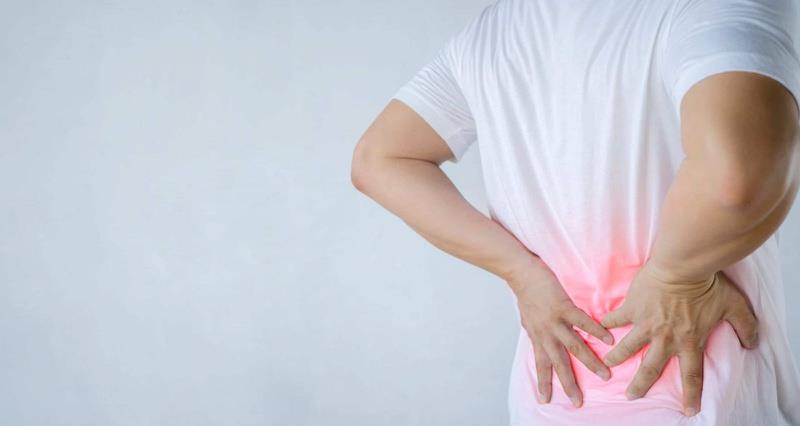List the benefits of Reverse Plank and how to do it correctly

Having belly fat is what makes many women feel self-conscious and do not dare to wear short dresses. Not only that, belly fat comes quickly, but it's not easy to get rid of it. Please refer to the reverse plank exercise to improve the above problem
The reverse plank is an exercise to beat belly fat that many women choose to use because it is both simple and does not take much time to practice. Not only that, doing the reverse plank does not need to use any support equipment and is very suitable for people with busy work nature.
So what are the benefits of reverse plank? How to do reverse plank? Let's learn about this exercise method to lose belly fat with SignsSymptomsList through the article below.
Benefits of the reverse plank exercise
The reverse plank exercise not only has the main effect of losing belly fat quickly but also brings many great health benefits such as:
- Helps to make glutes and calves more fit and stable.
- Improves metabolism because calories will burn faster.
- Solid spine.
- Stabilizes balance, helps straighten back muscles and is extremely suitable for office workers.
- Limit back pain and cramps from occurring.
- Belly fat quickly disappears, abs are flatter.
- Strengthens the arms, legs, and abs, while also stretching the shoulder muscles.

The reverse plank helps the practitioner quickly own a balanced physique
Instructions to perform reverse plank at home
To be able to perform the posture in the most correct way to bring about high efficiency, you should follow these instructions:
- Step 1: Sit on the floor and straighten your legs in front of you. Place your hands on the floor with palms facing down and spread your fingers apart.
- Step 2: Bend forward about 45° off the floor. Bring your arms behind your buttocks so that your arms and shoulders form a straight downward line.
- Step 3: Hold your body weight with your hands and heels as you push your butt up. Begin to raise your legs, torso, and buttocks so that they form a straight line. Tighten your abs and pull in your abs while your torso is being moved upwards.
- Step 4: Hold the position for 15-60 seconds and then slowly lower your body to the floor.
Do the correct reverse plank position to achieve the desired effect
Common mistakes when doing reverse plank
Although the reverse plank is a fairly simple and easy exercise to do, you can still make some common mistakes and affect your training efficiency. Some mistakes when doing reverse plank exercises such as:
- Back crunch: Depletes effort from your core and reduces the effectiveness of the workout. So always keep your back straight in a neutral position.
- Lowering the hips: Makes your back arch up and puts undue stress on the lower back and abdomen. Always make sure your hips are in line with your shoulders, knees, and feet.
- Lift your butt too high: Shift your weight to your upper body. To limit this, focus on your body and tilt your pelvis forward.
- Holding your breath: Makes the exercise more difficult and puts excessive pressure on the body. When exercising, stay focused, breathe calmly and in control.
- Pushing the abdomen out: When you feel the belly button retraction or the abdomen is concave during exercise, correct the posture as instructed above to achieve the desired training results.
Some limitations when practicing non-standard reverse plank
In addition to the positive effects that the reverse plank brings, the exercise still has weaknesses that need to be overcome. In the process of practicing for beginners, you will encounter many problems and find it difficult, but after a while of getting used to and mastering them, they will reduce and have little effect on the training process.
Affects the respiratory system
During the reverse plank, your body will put stress on the muscles, making the ability to exchange oxygen reduced. This affects the respiratory system and makes the practitioner tired quickly. To improve this condition, you need to keep the organs straight so that oxygen is better circulated and the breathing rate also becomes more stable to maintain an adequate oxygen supply.
Causes stress on joints
The reverse plank exercise puts pressure on the intercostal muscles, the sternum muscles by stimulating the fat-burning activity to make the abdominal muscles firm. So, after standing up, you will feel a slight sting in the breast area or the position of the ribs. Therefore, before practicing plank, you should warm up to reduce pain and should not exercise too hard if you feel uncomfortable.
In case you are in too much pain, you should see a doctor to get a diagnosis and give you exercise advice suitable for your health.
Causing back pain for practitioners
Regular reverse plank exercise will not cause joint pain because it builds bone tissue cells and helps bones become stronger. However, if you do it the wrong way, it will really cause the pain. Therefore, you should correct your posture before exercising to limit injury.

Practicing with the wrong posture can cause back injuries
The article on SignsSymptomsList has provided readers with basic information about the reverse plank exercise. Be persistent in doing plank exercises if you want to have a balanced figure and remove excess body fat. Although the reverse plank exercise is quite simple to do, it should only be practiced in accordance with the health status of your best friend to limit injury or pain.